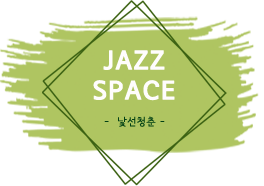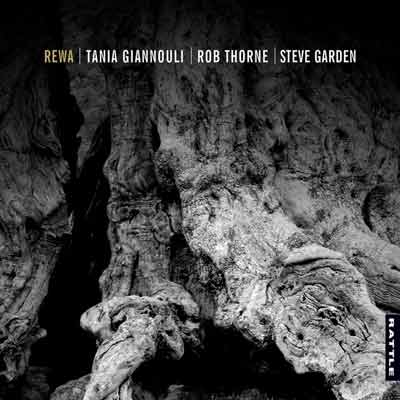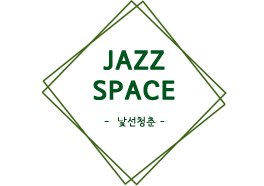 재즈를 들으면 들을수록 나는 재즈가 기본적으로 근본이 없는 상태를 지향한다는 생각이 든다. 근본이 없다는 것이 아무 음악도 아닌 것을 의미하지 않는다. 그보다는 근본 없음이 재즈를 정의한다는 것이다.
재즈를 들으면 들을수록 나는 재즈가 기본적으로 근본이 없는 상태를 지향한다는 생각이 든다. 근본이 없다는 것이 아무 음악도 아닌 것을 의미하지 않는다. 그보다는 근본 없음이 재즈를 정의한다는 것이다.
이것은 재즈가 순간성에 의지하기 때문이다. 특정 시간, 특정 연주자들의 만남이라는 사건에서 발생하는 우발적인 결과, 그러니까 연주자들의 의도 이상의 비자발적 결과가 재즈를 만들기 때문이다.
그리스의 피아노 연주자 타니아 지안노울리와 뉴질랜드 출신으로 마오리족의 전통 악기 타옹가 푸오로(Taonga Puoro)를 연주하는 롭 손, 그리고 래틀 레이블의 주인으로 사운드 편집, 효과 등을 담당한 스티브 가든의 공동 앨범 <Rewa>도 그런 경우에 해당한다. 이들의 만남은 피아노 연주자가 타옹가 푸오로 연주자의 음악에 매료되어 협연을 제안하여 이루어졌다.
두 연주자의 만남은 이틀에 걸쳐 진행되었다. 그리고 그 만남에 준비된 것은 아무 것도 없었다. 즉흥적으로 서로가 서로의 연주를 들으며 연주하는 것이 전부였다. 이 만남이 앨범 제작으로 이어질 것에 대한 확신도 없었다.
앨범은 타니아 지안노울리나 롭 손 그 누구의 것도 아닌 새로운 음악을 담고 있다. 롭 손은 평소대로 마오리 전통 악기를 연주했지만 그 내용은 평소와는 달랐다. 타니아 지안노울리 또한 서양 음악의 전통을 바탕으로 연주했지만 그 분위기는 자못 달랐다.
두 연주자는 미지의 장소에 던져진 듯 긴장 속에 탐험을 거듭했다. 그 공간은 그리스적의 어느 해안도 아니고 뉴질랜드의 어느 숲도 아니었다. 지도 상 어느 곳에도 전재하지 않는 가상의 공간이었다. 또한 그 공간은 탈시간적인 공간이었다. 그리스나 마오리의 전설을 담은 신화적 공간도 아니었고 지역적 이질성이 사라진 현대적인 공간도 아니었다.
탐험이라고 했지만 그것은 창조이기도 했다. 두 연주자의 발걸음은 잊혀진 땅(A Fogotten Land)에 어두운 별빛(Dark Star)을 비추었다. 나아가 구역이 정리되지 않은(Undivided), 그 공간 속 사물들에 여러 색(Prism)을 부여하고 영원의(Timeless) 주문(Spell)을 걸었다.
이러한 시공간적 음악은 두 연주자가 손을 맞잡았기에 가능했다. 서로 다른 음악적 기반에 기인한 차이를 확인하는 대신 이를 인정하고 상대의 연주를 경청하며 함께 같은 방향을 향해 나아갔기에 가능했다. 두 사람의 연주가 특정 주법으로 설명하기 어려우면서도 재즈에서 말하는 인터플레이 혹은 상호 교감으로 설명할 수 있는 것은 바로 이 때문이다.
만약 두 연주자가 다른 피아노 연주자, 다른 타옹가 푸오로 연주자와 함께 했다면 분명 이와는 다른 음악이 만들어졌을 것이다. 아니 타니아 지안노울리와 롭 손이 다른 날에 만나 연주했다고 해도 음악은 달랐을 것이다. 재즈 혹은 즉흥 음악의 매력은 바로 여기에 있다. 수 많은 음악적 순간 가운데 하나의 순간을 포착하여 듣게 해준다는 것, 그리고 그 순간을 통해 영원을 꿈꾸게 한다는 것.
The more I listen to jazz, the more I feel jazz is oriented toward a state where there is no basic, no root. No-root does not mean no-music. Rather, I think state of no root defines jazz.
This is because jazz relies on the moment. An accidental result of a certain time, meeting of certain performers, or an involuntary result of more than the intentions of the performers, makes jazz.
The album of Tania Giannouli(piano), Rob Thorne(Taonga Puoro-the Maori traditional musical instrument ) and Steve Garden(sound treatments ) is the good example.
Their meeting was made by the pianist who is fascinated by the music of Rob Thorne. She suggested playing together.
The meeting between the two performers lasted two days. And nothing was prepared for the meeting. All they could do was improvising play, listening to each other. It was also unsure if the meeting would lead to the album production.
The album features a new music that is not Tania Giannouli, or Rob Thorne’s. Rob Thorne played taonga puoro as usual, but the music was different. Tania Giannouli also performed based on the traditions of Western music, but the atmosphere was quite different.
The two musicians repeatedly explored in tension as if they had been thrown into an unknown place. The space was not on any coast of Greece and it was not on any forest in New Zealand. It was imaginary space that was not anywhere on the map. The space was also a one out of time flow. It was neither a mythical space that contained Greek or Maori legends nor a modern space where regional difference had disappeared.
It was also a creation. Their feet reflected “dark star” on “a forgotten land” In addition, they gave the objects in that “undivided” space a variety of colors “prism” and put the “spell” of “timeless”
This spatio-temporal music was possible because the performers held hands together. They did go to the same direction, acknowledging their musical differences and listening to each other’s performances. That’s why we can call their play the interplay in jazz or improvising music, even though their playing skill is hard to be explained.
If they had played with another piano player, another taonga puoro player, the music would certainly have been different. Even if they had played on the other day, the music would have been different. The attraction of jazz or improvising music is right here. It captures one moment among countless musical moments, and makes the listeners dream of eternity through those moments.



